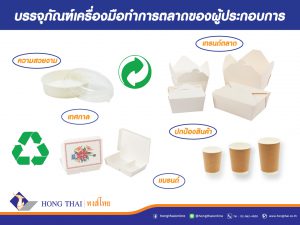Health-promoting activities or trends are gaining significant attention. Entrepreneurs or business owners with strong management skills are incorporating popular or trending concepts into their marketing strategies. Food preservation to maintain quality and ensure consumers receive benefits is an essential part of health promotion. Designing packaging for food and beverages to meet these needs is a fascinating marketing strategy.
Packaging and Food Preservation to Maintain Food Quality
Food preservation refers to maintaining the quality of food over the longest possible period by reducing or eliminating factors that can degrade the product, especially consumables. Designing packaging for food and beverages, or other types of packaging, that preserves food quality for as long as possible not only meets consumer needs for better quality of life but also promotes environmentally friendly packaging, adding value and drawing more consumer interest.
To design packaging that can preserve food quality for a specified period, the following factors must be considered:
- Hygiene: The packaging must be made from natural materials and be free of harmful substances that can negatively impact consumers, especially for food and beverage packaging.
- Preservation of Nutritional Value: Packaging should maintain the nutritional benefits of the food, such as designing paper boxes for food that can be refrigerated and microwaved.
- Flavor and Aroma Retention: Packaging for food and beverages should be designed to preserve the taste and aroma of the product.
- Technology Quality: The quality of technology used in designing food-preserving packaging plays a significant role. Selecting modern factories for paper box and packaging production is crucial in this regard.
Role of Food Preservation Packaging
The role of packaging goes beyond simply containing the product; in another sense, it serves as a tool for preserving food quality. It functions in two ways: passive protection and active protection. Passive protection refers to simply enclosing food or products without exposure to external air, while active protection involves ensuring that the packaging does not react with the food and preserves its flavor and aroma.
In summary, food and beverage packaging for food preservation, such as food boxes and paper cups, plays a critical role in maintaining food quality. Beyond design, material selection, and choosing a high-quality, technologically advanced production facility, packaging must be capable of offering both passive and active protection to ensure the consumer receives the highest benefits.






